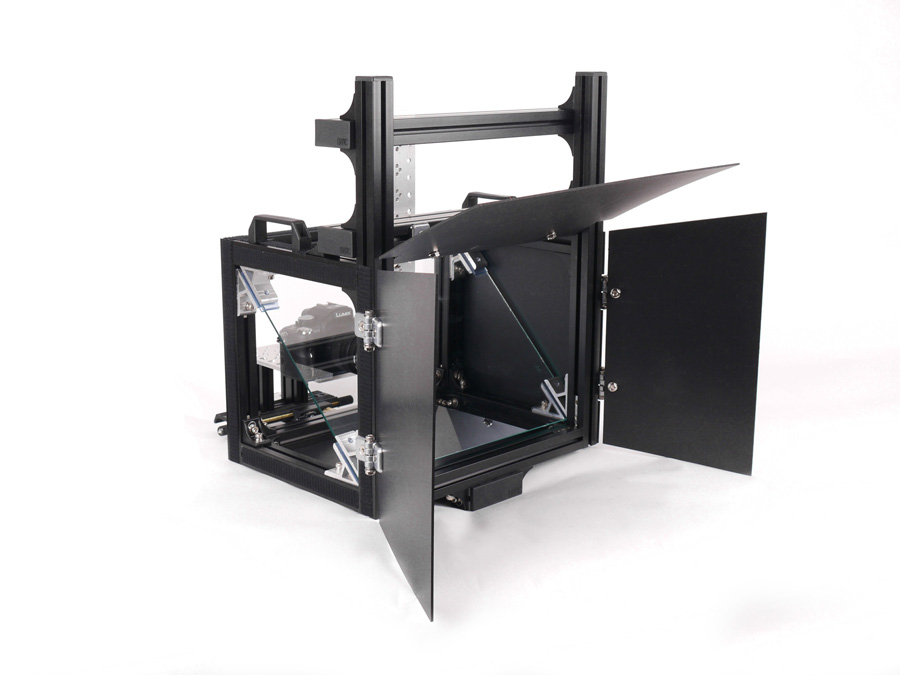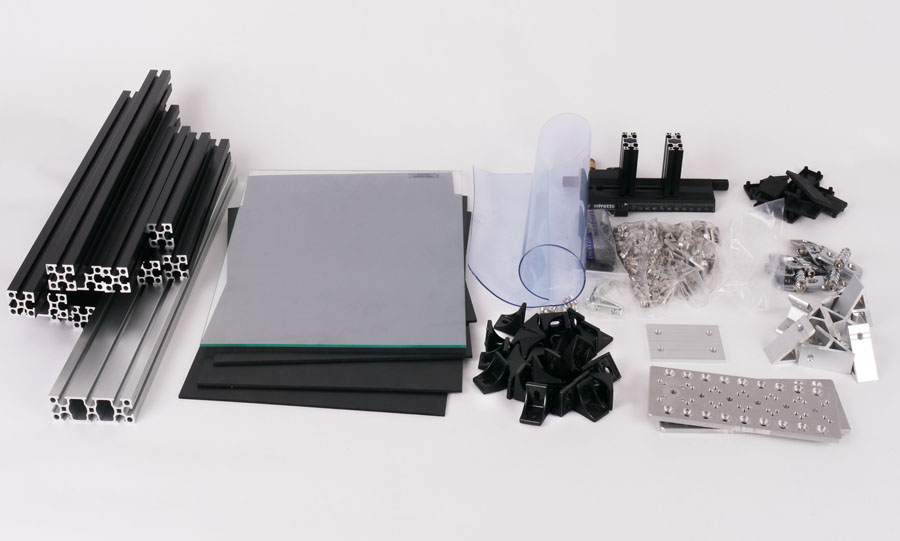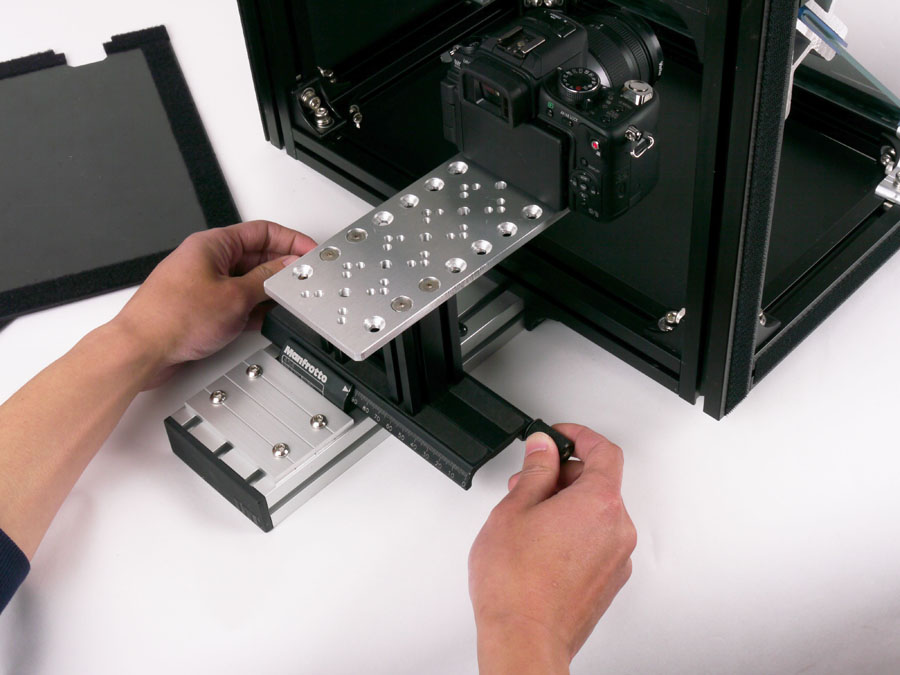
Please, support PV!
It allows to keep PV going, with more focus towards AI, but keeping be one of the few truly independent places.
It allows to keep PV going, with more focus towards AI, but keeping be one of the few truly independent places.
Interesting stuff: 3D Rig
-
Thanks! I have seen it before. Not bad at all when taking into account prices for similar (larger) rigs. However, you can make even better rig which costs less (let's say about 400$ or even less) by yourself. OK. I've spent much more money till now, since I had made several rigs before I was really satisfied with stability of the latest rig, with accuracy of 3D (very important!!) and the speed of changing distances & loading/unloading cameras. 3D was never so good... Oh gosh, I should start producing rigs instead of making 3D videos... :-)
-
I'm building on of these from scratch at my internship right now. Fun stuff! (I may as well ask this here, as NOBODY on C5D Forum even answered my question at all . . . does anyone know of a dual-input monitor with either onionskin capability, or the ability to switch instantly from one input to another? For adjusting 3D Rigs?)
-
@B3Guy
May be cheaper to get HDMI switcher? I see bunch of cheap and portable switchers on ebay. -
@VK... please don't get me excited about another 3D Solution- now I am going to HAVE to get those digital focus motors (Ever since James pulled focus in 3D- thats where it is at!)...
Other than that- its a great use of (guessing) Bosch Extruded Profile! (or Item)... and simple... -
@B3Guy
There is a new product similar to the Atomos Ninja- made by Convergent Design, (the Grandfathers of HD Remote Recording) - forget its name: http://www.convergent-design.com/ (its on the main page).
Allows 2x HD-SDI + HDMI 1.4 output + a large screen where I am assuming that you can look at funky meters... (convergence... etc...) -
Thanks. We're trying to keep this budget, so the current best option seems to be a couple of USB converter inputs by the Elgato company, into a MacbookPro running a software switcher program with the fader at 50%. Once the rig is successfully adjusted, specific lengths for the rails will be finalized, and everything will be sent off to get anodized. Once the rig gets an initial setup using the computer, it should just be a matter of adjusting the camera separation for each shot. (I personally don't like to muck around with toe-in. Just confuses things.)
-
@alcomposer
"Other than that- its a great use of (guessing) Bosch Extruded Profile! (or Item)... and simple... "
Are you talking about the first post? As far as I can judge (some time ago I was trying to figure it out), they are not using Bosch profiles, but other ones (can't remember if they are from China or S. Korea). However, I might be wrong.
My rig is made from Bosch profiles. -
@B3uy: "(I personally don't like to muck around with toe-in. Just confuses things.)"
Not only confuses, but you would need a software capable of correcting keystone distortions for video (if possible, automatically). Without such correction you will never be able to adjust the picture (perfectly).
-
Anybody see any new "reasonably priced" 3D Beam Splitter rigs?
Redrock has a cheap side-by-side solution, but won't work for my app. I'd need beam slitter.
Genus hurricane 3D at $8000 new and over $6500 used is a little much for me... -
The AquaVideo rig is a good deal and a solid piece of hardware.... http://www.aquavideo.com/press/AquaVideoAero3DPressrelease.pdf
Full disclosure - Mike Hastings is a friend and I was tangentially involved in the design of this rig. I am NOT financially involved in any way, however. -
@David_Cole Price seems reasonable. Did you use another rig as benchmark?
I saw these for example online...
3DFilmfactory
3D Bullet Rig Handheld = $5,895
http://www.3dfilmfactory.com/index.p...d=71&Itemid=76
3D-BS INDIE RIG (beam-splitter), 25lbs = $3895
Aquavideo
Aero3D List Price $5895. NAB introductory price: $ 3995
http://www.aquavideo.com/press/AquaV...essrelease.pdf
The least expensive is Aero3D handheld rig at $3995 so far, if solid build quality... -
a powerful netbook + stereoscopic player (50$) + stereoscopic multiplexer (few bucks more) + 2 usb video grabber sd (30$ ?)
you have a powerful 3d monitor in not expansive way. just tested...
but the real problem is that you cannot sincronize at single line the two gh2 camera, that mean you cannot do camera movment without problems in stereosinch -
There most certainly IS a way to align the initial sync of the two cameras. There are a number of stereo guys out there doing just that. I've exhaustively tested GH1s and 2's with MANUAL lenses using a power-up sync technique (essentially turning each camera on at exactly the same time from the same power source) and found consistently less than .02 ms of offset at the beginning of each test run and seldom more than .1 ms after 5 min. My cameras are very close in serial number - which may help when it comes to drift over time. Your mileage may vary. Details can be found in the 3D section here.
-
Hi david,
i'm stereographer, it's my work.. small delay is not enought. you need a pixel synch, you can cause a big headace to your viewer if you show a 3d pan over 1 meter screen size.
i tested many tools to synch cameras without genlock, based on powerupsynch, on signal flash synch and more... but they work only on small 3d monitor preview, when you show also with a simple videoprojector, like mine, on a 2,5 meters screen... you canno t see more than 20, 30 seconds before to see some problems. after a minutes you have headace... after three minutes you have eyes strain... and more... stereoscopic shooting is not a simple tool buying, is a complex work, that involve phisiologic studies, perception studies and more.. -
Umm.... I'm CEO of Next3D. We make live stereoscopic differential encoders for Turner Sports, among others. Differential encoders rely on high-coherence between the left and right eyes. We understand sync.
We've encoded plenty of content from LANC or power-up-sync rigs that have less phase error than tri-level sync-based rigs (REDONE being a worst offender). There is no question that rigs that do not have jam-sync will drift over time. Lucky, you can monitor the v-blank from the GH1 (just like the packet timing with a LANC-based rig) and determine when it is time to reset. .1ms after 5 min is VERY good, however, and will not result in any significant phase error. One truth that must be shared is that some cameras may not pair as well - as their oscillators may drift more rapidly. Unfortunately , there is no way to really tell except to gen-up a rig and try it with a sync tester (such as Peter Wimmer's excellent CRT-based tester software). Generally, you try to buy consecutive serial numbered cameras to minimize the risk.
I do agree that photo-strobe or clap-based sync methods are bunk. As much as a 1/2 frame of error can occur - which is a recipe for a headache, especially if there is motion parallel to the sensor.
One of the tremendous upsides to the Gh2 is the hack - especially the low-GOP work. As the H264 encoders in the cameras are (obviously) not aware of each other, they make independent decisions about motion coding. This can result in severe occlusion disparity with lots of parallel-to-the-sensor movement (especially when the object in motion is in negative parallax). With the low-GOP hacks, the latitude each camera has to make independent decisions is gated. This improves apparent motion in the encoded stereo material tremendously.
Take a look for yourself at this sample from my GH2 rig: I don't think you'll see any phase lag.
Regards.
-
Any simple mechanical rig for side-by-side shooting ? It just needs to be calibrated so y and z axes are constant. Just the x-axis needs to be adjustable. No sense in spending so much on side-by-side rigs.
Start New Topic


Howdy, Stranger!
It looks like you're new here. If you want to get involved, click one of these buttons!
Categories
- Topics List23,991
- Blog5,725
- General and News1,354
- Hacks and Patches1,153
- ↳ Top Settings33
- ↳ Beginners256
- ↳ Archives402
- ↳ Hacks News and Development56
- Cameras2,367
- ↳ Panasonic995
- ↳ Canon118
- ↳ Sony156
- ↳ Nikon96
- ↳ Pentax and Samsung70
- ↳ Olympus and Fujifilm101
- ↳ Compacts and Camcorders300
- ↳ Smartphones for video97
- ↳ Pro Video Cameras191
- ↳ BlackMagic and other raw cameras116
- Skill1,960
- ↳ Business and distribution66
- ↳ Preparation, scripts and legal38
- ↳ Art149
- ↳ Import, Convert, Exporting291
- ↳ Editors191
- ↳ Effects and stunts115
- ↳ Color grading197
- ↳ Sound and Music280
- ↳ Lighting96
- ↳ Software and storage tips266
- Gear5,420
- ↳ Filters, Adapters, Matte boxes344
- ↳ Lenses1,582
- ↳ Follow focus and gears93
- ↳ Sound499
- ↳ Lighting gear314
- ↳ Camera movement230
- ↳ Gimbals and copters302
- ↳ Rigs and related stuff273
- ↳ Power solutions83
- ↳ Monitors and viewfinders340
- ↳ Tripods and fluid heads139
- ↳ Storage286
- ↳ Computers and studio gear560
- ↳ VR and 3D248
- Showcase1,859
- Marketplace2,834
- Offtopic1,319










